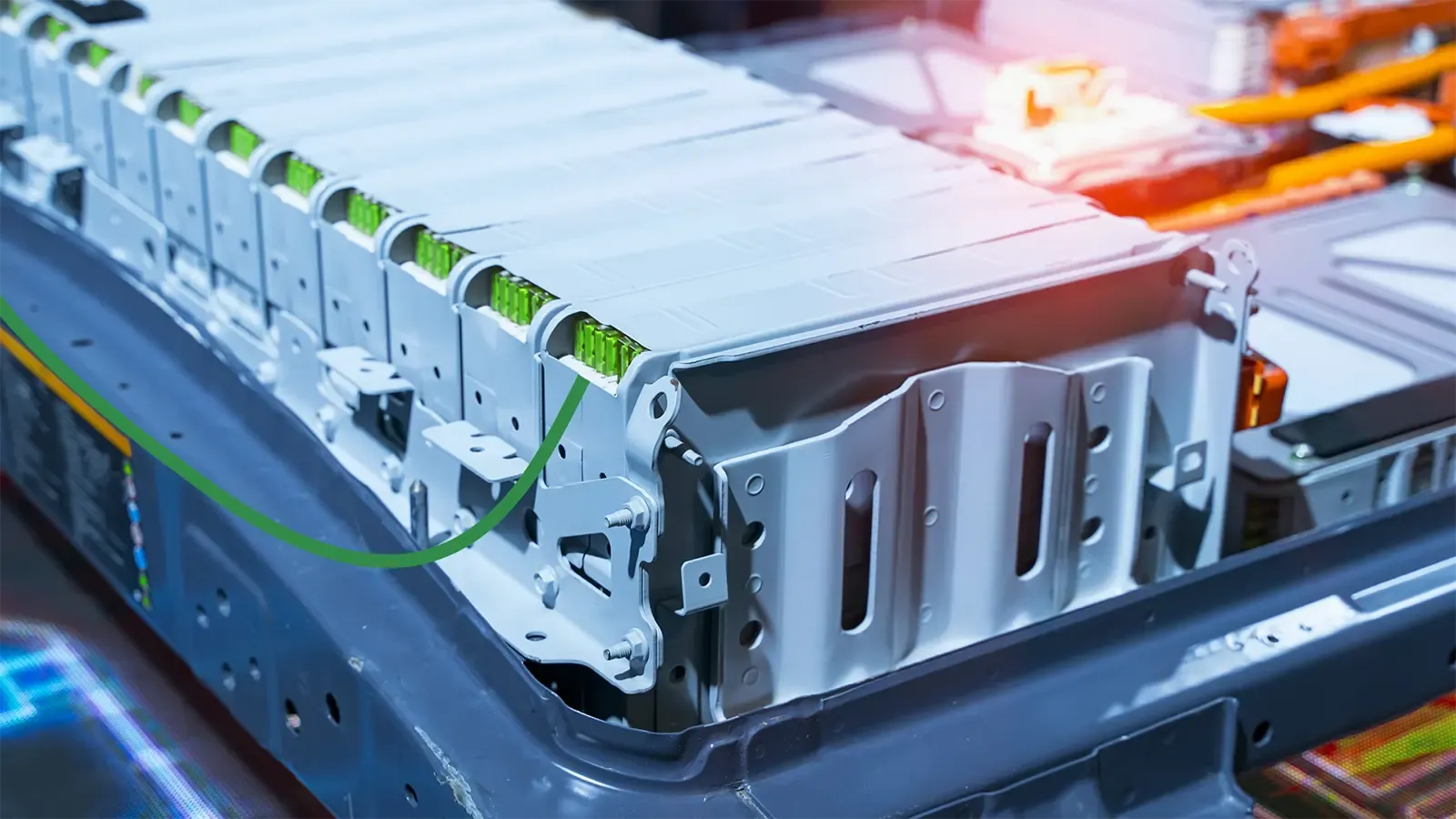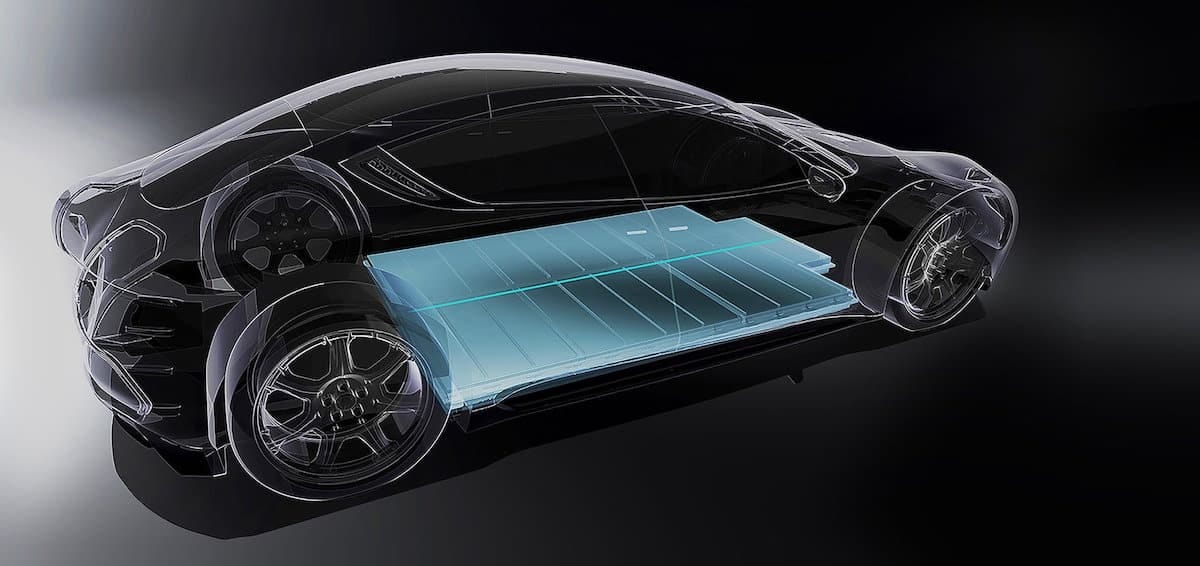Solid-State Battery Technology: The Future of Electric Cars

Anúncios
The automotive industry stands on the brink of a revolution, and solid-state battery technology is leading the charge.
Promising higher energy density, faster charging, and improved safety, this breakthrough could redefine electric vehicles (EVs) as we know them.
But will it live up to the hype? Let’s explore the science, the challenges, and why this innovation might be the game-changer EVs desperately need.
Anúncios
As the world shifts towards sustainable energy, the demand for efficient and reliable battery technology is more critical than ever.
Solid-state batteries could play a pivotal role in this transition, potentially allowing electric vehicles to compete more effectively with traditional combustion engines.
With advancements in technology and increasing investments, the future of solid-state batteries looks promising, but significant hurdles remain.
As governments around the world set ambitious targets for reducing carbon emissions, the pressure is on manufacturers to innovate rapidly.
This urgency could accelerate research and development, leading to breakthroughs that make solid-state batteries a viable option much sooner than anticipated.
Why Solid-State Batteries Outperform Lithium-Ion
Traditional lithium-ion batteries have powered EVs for years, but their limitations are becoming increasingly apparent.
Overheating risks, long charging times, and energy density ceilings hinder progress.
Solid-state battery technology replaces liquid electrolytes with solid conductive materials, eliminating flammability concerns while boosting efficiency.
This innovation not only enhances safety but also opens the door to new applications in various sectors, including consumer electronics and renewable energy storage.
The ability to create batteries that are both lighter and more powerful can revolutionize how we think about energy storage and consumption.
Moreover, as manufacturers continue to refine these technologies, we may see further enhancements in performance and cost-effectiveness.
The potential for solid-state batteries to be produced at scale could lead to a significant reduction in overall costs, making electric vehicles more accessible to the average consumer.
As competition among manufacturers intensifies, we can expect to see rapid advancements in battery technology, driving innovation and improving performance metrics across the board.
According to a 2023 study by McKinsey & Company, solid-state batteries could achieve energy densities up to 500 Wh/kg—nearly double today’s best lithium-ion cells.
This leap means lighter cars with longer ranges, addressing two major consumer concerns simultaneously.
Key Advantages:
- Faster Charging – Some prototypes reach 80% charge in under 10 minutes.
- Longer Lifespan – Reduced degradation over cycles.
- Enhanced Safety – No volatile liquid electrolytes.
+ Active Safety Systems: Technologies That Prevent Accidents
The Roadblocks: Cost and Scalability
Despite its potential, solid-state battery technology faces significant hurdles.
Manufacturing complexities and material costs remain prohibitive.
Lithium, sulfur, and ceramic solid electrolytes require precision engineering, pushing production expenses higher than conventional batteries.
In addition to high costs, the scaling of production processes poses a major challenge for manufacturers looking to meet growing demand.
The transition from prototype to mass production requires not only technological advancements but also substantial investment in infrastructure.
As companies navigate these challenges, collaboration between automotive manufacturers and battery suppliers will be crucial for success.
Toyota, a frontrunner in this space, estimates commercialization by 2027-2030, but even then, initial prices may limit adoption to luxury models.
Startups like QuantumScape and Solid Power are racing to refine processes, yet scalability remains uncertain.
To overcome these hurdles, companies are exploring alternative materials and innovative manufacturing techniques that could reduce costs and improve efficiency.
By investing in research and development, the industry can potentially unlock new pathways for mass production, making solid-state batteries a reality for a broader range of consumers.

Current Challenges:
| Challenge | Impact on Adoption |
|---|---|
| High Production Cost | Delays mass-market entry |
| Material Scarcity | Increases reliance on rare elements |
| Durability Issues | Long-term performance unproven |
Who’s Leading the Race?
Automakers and tech firms are investing billions to dominate this space.
Here’s how key players stack up:
Industry Progress (2024 Snapshot)
| Company | Status | Expected Launch |
|---|---|---|
| Toyota | Prototype testing | 2027-2030 |
| QuantumScape | Partnership with VW | 2025-2026 |
| BMW | Co-developing with Solid Power | 2028 |
| Nissan | Pilot production in Japan | 2026 |
Toyota’s 745-mile range prototype demonstrates the staggering potential, but real-world conditions could temper expectations.
As competition heats up, we can expect more breakthroughs and announcements from various companies, each vying for a competitive edge.
The race to develop solid-state batteries could lead to unexpected collaborations, as companies recognize the need for shared expertise to overcome common challenges.
Furthermore, the global push for sustainability may accelerate developments, as governments and consumers alike demand cleaner transportation solutions.
The landscape of battery technology is evolving rapidly, and companies that can adapt quickly will likely emerge as leaders in the market.
Investments in research and development, along with strategic partnerships, will be key factors in determining which companies successfully navigate this competitive environment.
++ Level 5 Autonomous Driving Technology: When Will It Hit the Market?
Environmental Impact: A Double-Edged Sword?
While solid-state battery technology reduces reliance on cobalt—a mineral linked to unethical mining—it introduces new concerns.
Some variants depend on rare materials like indium or germanium, raising sustainability questions.
Recycling infrastructure must evolve to handle these new chemistries.
The environmental footprint of battery production and disposal is a critical concern that cannot be overlooked.
As the industry moves forward, developing sustainable practices for sourcing materials and recycling will be essential to mitigate negative impacts.
Moreover, public awareness and regulatory measures may influence how companies approach these challenges, pushing for greater transparency and ethical sourcing.
However, if perfected, these batteries could cut EV carbon footprints by 30%, thanks to longer lifespans and fewer replacements.
This reduction in environmental impact could play a significant role in meeting global climate goals, making solid-state batteries an attractive option for policymakers and consumers alike.
As more research is conducted on the lifecycle of these batteries, we may discover additional benefits that further enhance their appeal as a sustainable energy solution.

What This Means for Consumers
Early adopters will likely pay a premium, but prices should drop as production scales.
Imagine EVs with 600+ miles per charge, charging in minutes, and lasting decades—solid-state battery technology could make this a reality.
As consumers become more environmentally conscious, the demand for sustainable and efficient electric vehicles will continue to rise.
This shift in consumer behavior could drive automakers to prioritize the development of solid-state batteries, ensuring they remain competitive in a rapidly evolving market.
Additionally, the integration of smart technologies within these vehicles could enhance the driving experience, offering features that appeal to tech-savvy consumers.
As the market for electric vehicles expands, consumers will have more options than ever, leading to increased competition and innovation.
Future Projections:
- 2025-2030: Limited luxury and performance models.
- 2030-2035: Gradual trickle-down to mainstream EVs.
- Post-2035: Potential dominance if costs decline.
For more insights on the future of electric vehicles, check out Electrek.
Conclusion: A Revolution in Waiting
Solid-state battery technology isn’t just an upgrade—it’s a paradigm shift.
While challenges persist, the rewards justify the industry’s fervent pursuit.
If automakers crack the code, the next decade could see EVs surpassing gasoline cars in every metric.
The implications of this technology extend beyond just vehicles; they could influence energy storage solutions for homes and businesses as well.
As solid-state batteries become more prevalent, we may witness a transformation in how we store and use energy across various sectors.
The future of electric mobility is solid—literally.
With continued research and investment, the dream of a sustainable, efficient, and accessible electric vehicle market could soon become a reality.
As we look ahead, it’s clear that the journey toward solid-state battery technology will require collaboration, innovation, and a commitment to sustainability.
The automotive landscape is on the verge of a significant transformation, and solid-state batteries could be at the forefront of this revolution.
